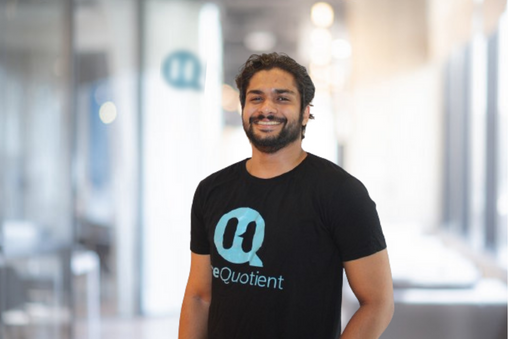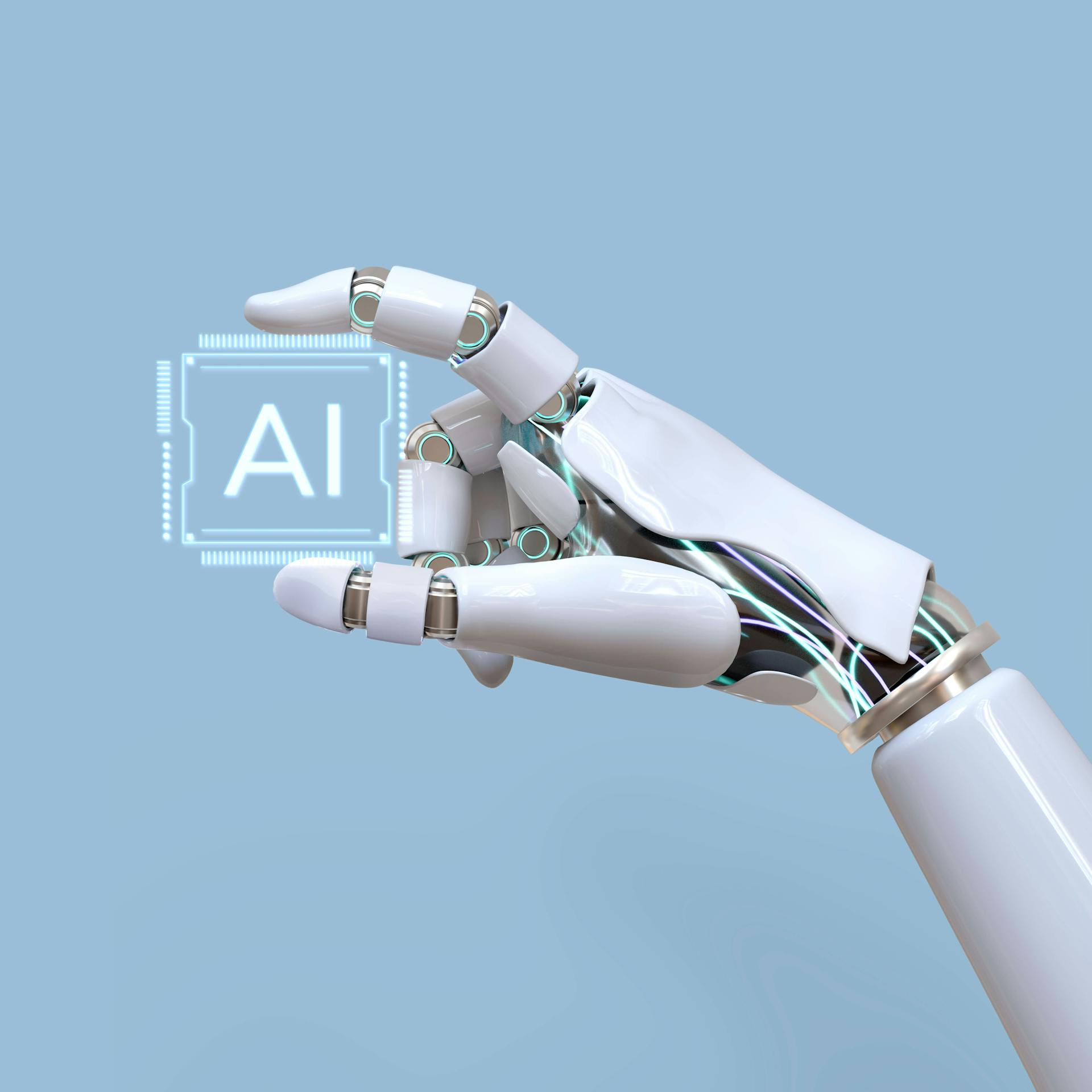AI in Hiring: How Autogpt is Helping Companies Find The Hidden Talent
Published on April 8th, 2023
'ChatGPT Is a Tipping Point for AI’ According to Ethan Mollick, Out of the many possibilities of change that ‘AI in hiring’ brings, the latest buzz is what AutoGPT has managed to do, or could manage to do in the world of hiring.
How is Auto GPT different from ChatGPT? Why is it better? According to an article from Cosmopolitan, in the simplest of words, the concept is that it can develop long-term business strategies and models and then execute them largely on its own rather than having a human tell it what to do at every stage. When a task is finished, Auto-GPT can then come up with another pertinent one to move on and cross off its list as well. With Chat GPT, a person would have to feed the information at different levels to derive significant output.
To understand the extent of how powerful Auto GPT can be in the context of the hiring world, a deeper dive is necessary.
What is AutoGPT?
Auto-GPT is a Python application that leverages GPT-4 to perform tasks with little human intervention and self-prompt. Developed by Significant Gravitas and driven by OpenAI's latest AI model, Auto-GPT has internet access, long-term, and short-term memory management, and file storage and summarization with GPT-3.5. Auto-GPT's goal prompts include increasing net worth, growing Twitter accounts, and developing and managing multiple businesses. While Auto-GPT may not perform well in complex, real-world business scenarios, users have reported impressive and helpful results. Twitter users have shared how they're using Auto-GPT to create an app, generate a new startup, tackle complex topics, and even stalk themselves on the internet.
The application's self-prompting capability enables users to tell Auto-GPT their end goal, and the application will produce every prompt necessary to complete the task autonomously. Auto-GPT's limitations are highlighted on GitHub, but users' results demonstrate that the AI model can accomplish advanced tasks with fewer prompts. Auto-GPT's file storage and summarization capabilities, combined with GPT-4's text generation, make it possible to perform any task that ChatGPT can perform, such as debugging code and writing an email.
So, this opens the doors to innumerable possibilities that could potentially change the hiring landscape for the better. To map out these possibilities, an overview of the challenges is what needs to be looked at first.
Challenges in talent sourcing
When sourcing candidates or hiring, some of the biggest challenges that can get overwhelming to hirers are the sheer volume of repetitive rote work. This involves aspects like structuring large amounts of data where in some cases, the applicant has not provided sufficient information. Not to mention the mountainous number of applicants, and providing a consistently positive candidate experience to each of these candidates.
Inefficient candidate engagement where providing personalized responses as it affects the brand value of a company. Speaking of brand value, human bias is one of the challenges HR departments have to face in multiple contexts, and moving around this obstacle is something that requires substantial effort. To uphold the brand value, the recruiter spends a significant amount of time performing tasks such as scheduling interviews, sending follow-up emails, and conducting background checks.
All of these could lead to difficulty in identifying top candidates. These sets of challenges can be chalked up to active candidates, even finding passive candidates is another tale of woe for most recruiters. Another aspect that Hiring managers and other stakeholders may lack is visibility into their hiring process, making it challenging to assess progress and identify areas for improvement. This includes aspects such as the number of applicants, time-to-fill, and candidate demographics. The issues mentioned are just an overview that grazes through the challenges. The next section would give a better idea of the challenges faced and how AutoGPt could help in redefining the hiring landscape.
The potential of AutoGPT in talent sourcing
Although most of the problems mentioned above can be rectified by adding more employees, the advent of AutoGPT eliminates the need for such a step by providing (in many cases) a better alternative that factors out human errors which is also cost-effective. The different areas where AutoGPT could cater to the requirements of hirers are as follows.
Oversee hiring trends and internal processes
Market analysis: AutoGPT can be used to analyze job postings and other data to identify trends in the job market, helping organizations to stay competitive and adjust their hiring strategies as needed.
Success metrics: AutoGPT can be used to analyze hiring data and other metrics to identify areas where the hiring process can be improved, helping to increase efficiency and reduce costs.
Boosting Candidate experience
Customized job descriptions: AutoGPT's ability to be fine-tuned for specific tasks can be very useful for creating customized job descriptions. By adjusting the parameters of the model, it can be trained to generate job descriptions that accurately reflect the skills and qualifications needed for a particular job. In fact, companies are already using technology with ChatGPT. AutoGPt would possibly be able to oversee the entire workflow with limited human intervention.
Personalized candidate feedback: AutoGPT's ability to analyze language and content can be very useful for providing personalized feedback to candidates. By analyzing resumes and cover letters, AutoGPT can identify areas where candidates can improve and provide specific feedback to help them improve their chances of getting hired.
Candidate engagement: AutoGPT can be used to generate personalized messages to candidates, such as follow-up emails after an interview or reminders about upcoming interviews. By analyzing previous interactions and language patterns, AutoGPT can generate messages that are tailored to the candidate's individual needs and preferences.
Diversity and inclusion: AutoGPT can be used to identify language patterns and biases in job postings and resumes, helping to promote diversity and inclusion in the hiring process. By analyzing language patterns and identifying biased language, AutoGPT can help organizations create more inclusive job postings and identify candidates from diverse backgrounds.
Employer branding: AutoGPT can be used to generate content for social media and other channels that promote the employer brand. By analyzing the organization's values and culture, AutoGPT can generate content that reflects the organization's mission and values, helping to attract top talent.
Enhancing candidate screening and selection
Better resume screening: AutoGPT's ability to learn from a wide range of text data can make it more effective at screening resumes and identifying the most qualified candidates. By analyzing job postings and resumes, AutoGPT can identify the key skills and qualifications needed for a particular job and identify the most relevant candidates.
Candidate assessment: AutoGPT can be used to analyze candidate responses to assessment questions, helping to identify skills, competencies, and potential cultural fit.
Improved candidate selection: AutoGPT's ability to analyze text data can be very useful for matching candidates with job openings. By analyzing job postings and resumes, AutoGPT can identify the key skills and qualifications needed for a particular job and identify the most relevant candidates.
More efficient interview scheduling: AutoGPT's speed and efficiency can be very beneficial for scheduling interviews with candidates. By analyzing schedules and availability, AutoGPT can quickly identify the best time for interviews, making the scheduling process more efficient.
Candidate pre-screening: AutoGPT can be used to analyze resumes and cover letters to determine if candidates meet the basic qualifications for a position, helping to streamline the candidate pool.
Interview analysis: AutoGPT can be used to analyze interview transcripts and provide feedback to hiring managers on the quality of their questions and interview techniques.
Succession planning: AutoGPT can be used to identify high-potential employees and analyze their skills and experiences, helping to create a succession plan for key roles within the organization.
Compliance: AutoGPT can be used to analyze job postings and resumes for compliance with legal and regulatory requirements, helping to reduce the risk of lawsuits and other legal issues.
Employee tracking and experience
Onboarding: AutoGPT can be used to generate personalized onboarding materials for new hires, helping them to quickly acclimate to the organization's culture and processes. By analyzing the new hire's role and background, AutoGPT can generate materials that are tailored to their individual needs and preferences.
Performance management: AutoGPT can be used to analyze employee feedback and performance data, helping managers identify improvement areas and provide targeted feedback to employees. By analyzing language patterns and identifying common themes, AutoGPT can help managers to provide more effective feedback and coaching.
Career pathing: AutoGPT can be used to analyze employee skills and experiences, helping to identify potential career paths and development opportunities.
Employee feedback analysis: AutoGPT can be used to analyze employee feedback and identify areas where the company can improve employee satisfaction and retention.
Learning and development: AutoGPT can be used to analyze employee skills and identify areas where learning and development opportunities can be provided to improve performance and retention.
Is it Doomsday for hirers yet?
For most, AutoGPT could set off the anxiety alarm, but again, AutoGPT, although providing exceptional results, is still at the stage where it is learning from existing models. The need for human intervention is still a necessity. This changes the hiring landscape substantially. Entry-level jobs are redefined and reshaped, but there are still a plethora of drawbacks that need to be addressed before AI can even come close to completely replacing or dominating human intelligence.
1. Limited knowledge of the domain
To start with, AutoGPT is a general-purpose language model that is trained on a large corpus of text data, but it may not have domain-specific knowledge or expertise. For example, if a company is hiring for a niche role that requires specialized knowledge or terminology, AutoGPT may not be able to fully understand the requirements of the job. In the current phase, it is still gathering and refining its knowledge base which leads to the next point of contention.
2. The need for ongoing maintenance
AutoGPT is not a one-time solution but rather requires ongoing maintenance and updates to ensure its effectiveness and accuracy. This can be a challenge for organizations that may not have the resources or expertise to keep up with the latest developments in NLP and machine learning.
3. The issues of having only a single form of input
If you were to consider a human being processing information, from various channels primarily visual, and auditory. AutoGPT is still a language-based model and is Inept to handle non-textual data. This means that it may not be suitable for tasks that require analysis of non-textual data, such as images or videos. Or in the context of hiring, different aspects of understanding a candidate’s emotion or reading between the lines is still out of the question.
This disadvantage also blindsides AutoGPT from behaving or executing actions contextually. AutoGPT processes language in a way that is largely based on statistical patterns and may not always be able to understand the context or nuance of the language. This can lead to incorrect or irrelevant results, especially when dealing with complex or ambiguous language.
This also leads to the Limited ability of AutoGPT to handle ambiguity. While AutoGPT is highly skilled at generating natural language text, it may struggle to handle situations where there is a high degree of ambiguity or uncertainty. This could lead to incorrect or irrelevant results when used for hiring.
Yet another issue that revolves around the dependency on a single form of input is also the difficulty of processing multilingual content. Although AutoGPT can handle multiple languages, it may not be as effective or accurate in processing content that includes multiple languages or code-switching between languages.
4. Hiring Bias
One of the most unexpected issues when AI is involved with hiring is that like any language model, AutoGPT may contain biases and reflect the biases of the data it was trained on. This can lead to unintended consequences and unfairness in hiring decisions. It is important to carefully monitor and evaluate the outputs of AutoGPT to ensure that it is not perpetuating biases.
To cater to this aspect additional resources are required to ensure that the data is updated, overlooked, and modified according to the talent sourcer’s or hirer’s requirements. To effectively use AutoGPT for hiring, it may be necessary to fine-tune the model to the specific needs of the organization or role. This can be a complex and resource-intensive process, requiring a high degree of technical expertise.
In connection with the aspect of additional resources, developing and deploying an AutoGPT-based solution for hiring can require significant technical expertise and resources, including access to large amounts of computational power and specialized software. This can make it difficult for smaller companies or organizations with limited resources to use AutoGPT effectively.
5. Ethical concerns
The use of AutoGPT for hiring raises ethical questions about fairness and discrimination. There is a risk that the model could inadvertently amplify existing biases or create new ones, leading to unfair or discriminatory hiring practices.
An added concern is that of privacy and security. AutoGPT requires access to large amounts of text data, which may include sensitive or confidential information. It is important to carefully consider privacy and security concerns when using AutoGPT for hiring or other applications.
AutoGPT is a complex machine learning model, and its outputs can be difficult to interpret or understand. This can make it challenging to identify and correct errors or biases in its output, which could potentially impact hiring decisions.
To conclude
AutoGPT is an innovative AI application that leverages GPT-4 to perform tasks with little human intervention, making it a powerful tool for hiring managers and recruiters. While AutoGPT may not perform well in complex, real-world business scenarios, users have reported impressive and helpful results. The application's self-prompting capability enables users to tell Auto-GPT their end goal, and the application will produce every prompt necessary to complete the task autonomously. AutoGPT has the potential to revolutionize talent sourcing by catering to various requirements of hirers, including market analysis, customized job descriptions, personalized candidate feedback, and candidate engagement. With the ability to identify trends, improve efficiency, reduce costs, and provide a better candidate experience, AutoGPT can reshape the hiring landscape and make it more efficient, cost-effective, and human-error-free.
That being said finetuning and understanding what catches the human eye better is something that still needs the expert guidance of a person accustomed to multiple formats of human-friendly designs. After all, the products or outputs are meant for human use. Eliminating the human thought process completely is a matter of speculation that can be taken up at a later point in time.
Book a demo with us to automate your hiring with HireQuotient.
Authors

Thomas M. A.
A literature-lover by design and qualification, Thomas loves exploring different aspects of software and writing about the same.

Hire the best without stress
Ask us how
Never Miss The Updates
We cover all recruitment, talent analytics, L&D, DEI, pre-employment, candidate screening, and hiring tools. Join our force & subscribe now!
Stay On Top Of Everything In HR
